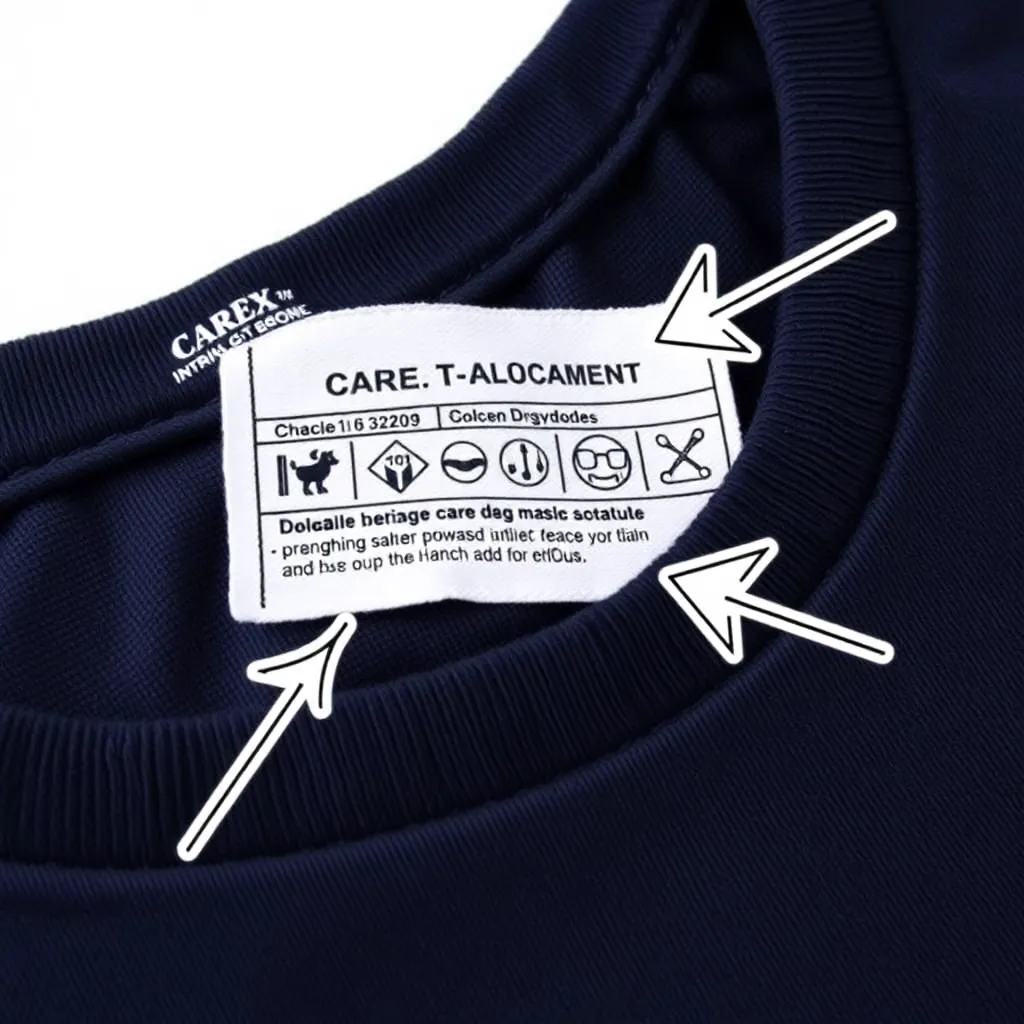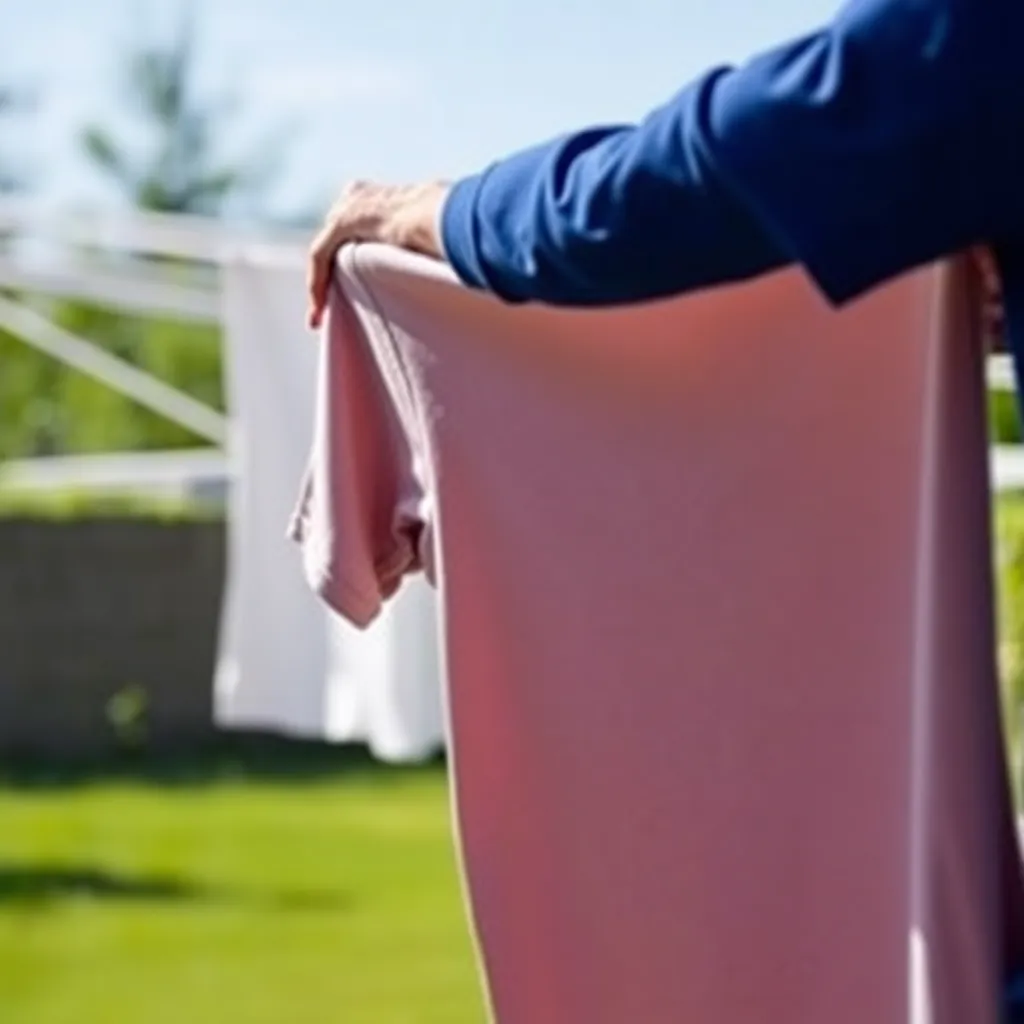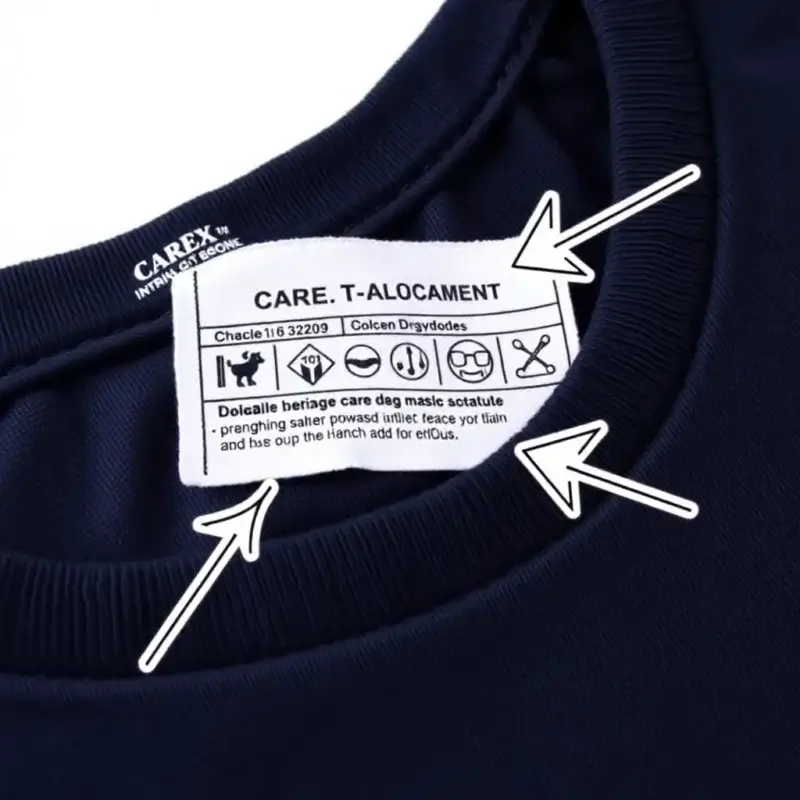10 Essential T-Shirt Care Tips to Make Your Favorite Tees Last Longer
One of the most important things to keep in mind when caring for your t-shirts is to check the care label. Different fabrics, such as cotton, polyester, or blends, may require special washing and drying instructions. Following these guidelines can help prevent shrinkage, fading, and other damage that can shorten the life of your shirt.
Washing your t-shirts in cold water is another key to making them last. Hot water can cause colors to fade and fabrics to shrink, while cold water helps preserve the color and fit of your shirt. Additionally, consider using a mild detergent that’s designed for washing clothes, rather than a harsh detergent that can strip the fabric of its natural oils.
When it comes to drying your t-shirts, it’s best to avoid using high heat. Instead, opt for air drying or tumble drying on a low setting. This can help prevent shrinkage and damage to the fabric. You can also remove your shirt from the dryer while it’s still slightly damp and hang it up to finish drying, which can help reduce wrinkles and creases.
1. Check the Care Label
It’s essential to check the care label on your t-shirt before doing anything else. This label provides valuable information from the manufacturer on how to properly care for your garment. By following these instructions, you can ensure your t-shirt looks its best, lasts longer, and remains comfortable to wear.
The care label will typically indicate the recommended washing method, such as machine wash or hand wash, and the suitable temperature of water to use. It may also specify whether the t-shirt can be bleached or ironed, and if so, at what temperature. Additionally, the label may provide guidance on drying, including whether the t-shirt can be tumble dried or should be air dried.
Failing to follow the care label instructions can result in damage to your t-shirt, such as shrinkage, fading, or loss of shape. This can be especially important for t-shirts made from delicate or special-care materials, like silk or wool. By taking the time to read and follow the care label, you can enjoy your t-shirt for a longer period and maintain its quality.
For more information on caring for your clothes, you can visit websites like the Good Housekeeping or The Spruce, which provide detailed guides on understanding care labels and laundry tips.

2. Wash in Cold Water
One of the most common mistakes people make when doing laundry is washing their clothes in hot water. While it may seem like a good idea to get rid of tough stains, hot water can actually do more harm than good. It can cause colors to fade and fabrics to shrink, leaving your favorite t-shirts looking dull and fitting poorly.
This is because hot water opens up the fibers of the fabric, allowing the dye to escape and causing the colors to run. Additionally, hot water can cause the fibers to contract, leading to shrinkage. On the other hand, washing your t-shirts in cold water helps to preserve the color and fit of your clothes.
Cold water is especially important for brightly colored or vibrant t-shirts, as it helps to prevent color bleeding and fading. According to the U.S. Environmental Protection Agency, washing clothes in cold water can also help to reduce energy consumption and save you money on your utility bills.
So next time you’re doing laundry, make sure to switch the dial to cold water to keep your t-shirts looking their best. Your clothes – and the environment – will thank you!
3. Avoid Using Bleach
Bleach is a strong chemical that can have devastating effects on fabrics, causing them to weaken and deteriorate over time. When used excessively or improperly, bleach can break down the fibers in clothing, leading to tears, holes, and discoloration. This is especially true for delicate or sensitive fabrics like silk, wool, and cotton.
Instead of reaching for bleach, it’s often better to opt for a gentle stain remover specifically designed for the type of fabric you’re working with. These products are formulated to target tough stains without damaging the underlying material. For example, enzyme-based stain removers are great for protein-based stains like blood and grass, while oxygen-based removers are better suited for organic stains like food and dirt.
Using a gentle stain remover can help extend the life of your clothing and prevent unnecessary wear and tear. It’s also a more environmentally friendly option, as it reduces the amount of harsh chemicals being released into the environment. According to the Environmental Protection Agency, many household cleaning products, including bleach, can contribute to air and water pollution.
4. Don’t Over-Dry Your Tees
Removing your t-shirts from the dryer while they’re still slightly damp can be a game-changer in terms of preserving their quality. This simple trick can help prevent shrinkage, which is a common problem that can occur when cotton fabrics are exposed to high heat. When t-shirts are dried completely, the fibers can contract and become smaller, resulting in a less-than-desirable fit.
By taking them out of the dryer while they’re still slightly damp, you can minimize the risk of shrinkage and keep your t-shirts looking their best. This method also helps to preserve the softness of the fabric, which can become rough and stiff when exposed to excessive heat. According to the Care Label Project, removing clothes from the dryer while still slightly damp can also reduce wrinkles and make ironing easier.
In addition to preventing shrinkage and preserving softness, removing t-shirts from the dryer while damp can also help reduce energy consumption. When you take them out early, you’re reducing the amount of time the dryer needs to run, which can lead to significant energy savings over time. So, not only will your t-shirts look and feel better, but you’ll also be doing your part for the environment.

5. Fold or Hang to Store
Folding or hanging your t-shirts when storing them is a simple yet effective way to prevent wrinkles and creases from forming. When t-shirts are bunched up or scrunched together, they can develop deep wrinkles that can be difficult to iron out. By folding them neatly or hanging them up, you can maintain their smooth texture and prevent those unsightly creases from appearing.
In addition to preventing wrinkles, folding or hanging your t-shirts can also help prevent stretching or distortion. When t-shirts are stored in a cramped or bunched-up manner, they can stretch out of shape, losing their original fit and appearance. By giving them some breathing room, you can preserve their shape and ensure they continue to fit well.
According to the Good Housekeeping website, folding t-shirts using the “KonMari fold” can help reduce wrinkles and creases. This method involves folding the t-shirt into a compact rectangular shape, making it easy to store and preventing wrinkles from forming.
6. Avoid Using Fabric Softener
Fabric softener can have a detrimental impact on the performance of your t-shirts, particularly those designed for athletic or outdoor activities. The residue left behind by fabric softener can reduce the breathability of the fabric, making it less able to wick away moisture and dry quickly. This can lead to discomfort and even skin irritation during exercise or other high-intensity activities.
Additionally, fabric softener residue can also affect the absorbency of your t-shirts. When fabric softener coats the fibers of your shirt, it can prevent them from absorbing sweat and moisture as effectively. This can result in a clammy, heavy feeling that’s uncomfortable against your skin.
It’s worth noting that not all fabric softeners are created equal, and some may be more likely to leave behind a residue than others. If you’re concerned about the impact of fabric softener on your t-shirts, consider opting for a residue-free or sports-specific fabric softener. You can also try skipping fabric softener altogether and instead using a vinegar rinse to soften your clothes.
For more information on how to care for your athletic wear, check out the REI website, which offers tips and advice on washing and caring for technical fabrics.
7. Iron While Still Damp
Ironing your t-shirts while they’re still slightly damp can be a game-changer when it comes to removing wrinkles. This technique allows the iron to glide more smoothly over the fabric, making it easier to get rid of those pesky creases. According to the Good Housekeeping Institute, ironing damp clothes can also help reduce the risk of scorching, which can be a major problem when working with cotton or linen fabrics.
When ironing damp t-shirts, it’s essential to use a lower heat setting to prevent scorching. You should also make sure to test the temperature of the iron on an inconspicuous area of the fabric first. This will help you avoid any damage to the t-shirt. Additionally, using a steam iron can be beneficial, as the steam can help relax the fibers and make the ironing process even easier.
It’s worth noting that not all fabrics can be ironed while damp. Delicate or synthetic fabrics, such as silk or polyester, may require a different approach. Always check the care label of your t-shirt to make sure you’re using the right technique. The Spruce Crafts also recommends ironing similar fabrics together to prevent any damage or discoloration.

8. Don’t Over-Wash
One of the most effective ways to extend the life of your t-shirts is to adopt a mindful approach to washing. Unless your t-shirt is visibly soiled, it’s recommended to limit your washing to every 3-4 wearings. This may seem counterintuitive, but over-washing can actually do more harm than good. According to the American Cleaning Institute, washing clothes too frequently can lead to premature wear and tear.
Over-washing can cause colors to fade and fabrics to degrade, which can result in a less vibrant and less comfortable t-shirt. This is especially true for cotton and other natural fibers, which can shrink or lose their softness when exposed to excessive washing and drying. By limiting your washing to every 3-4 wearings, you can help preserve the quality and appearance of your t-shirts.
Additionally, reducing the frequency of washing can also have environmental benefits. According to the United States Environmental Protection Agency (EPA), the average American generates about 4.4 pounds of laundry per week, which can contribute to water and energy waste. By washing your t-shirts less often, you can do your part in reducing your carbon footprint.
9. Use a Gentle Detergent
When it comes to washing your favorite t-shirts, using the right detergent is crucial. A mild detergent specifically designed for delicate or sensitive fabrics is the way to go. This type of detergent is gentle on the fabric, reducing the risk of damage, shrinkage, or discoloration. Look for detergents that are labeled as “gentle” or “delicate” to ensure you’re giving your t-shirts the care they need.
Using a mild detergent is especially important if you have t-shirts made from sensitive materials like silk, wool, or bamboo. These fabrics require special care to maintain their quality and extend their lifespan. A mild detergent will help preserve the softness, texture, and color of your t-shirts, keeping them looking their best wash after wash.
According to the American Cleaning Institute, using the right detergent can make a significant difference in the longevity of your clothes. By choosing a mild detergent, you can prevent damage caused by harsh chemicals and dyes found in regular detergents. This means your t-shirts will remain comfortable, breathable, and looking great for a longer period.
10. Consider Hand-Washing
When it comes to delicate or special-care t-shirts, it’s essential to handle them with care to maintain their quality and extend their lifespan. Hand-washing is a great way to ensure they receive the gentle treatment they need. By washing them in cold water, you’ll prevent shrinkage and color fading, which can occur when exposed to hot water.
Using a gentle detergent is also crucial, as harsh chemicals can damage the fabric or cause discoloration. Look for a mild detergent that’s specifically designed for washing delicate or hand-wash only items. Avoid using bleach or fabric softener, as these can leave residues that can affect the texture and appearance of your t-shirt.
When hand-washing your t-shirt, gently swish the garment around in the water, working from the top down. Avoid wringing or twisting the fabric, as this can cause stretching or distortion. Instead, gently squeeze out excess water without wringing, and then lay the t-shirt flat to air-dry. This will help prevent shrinkage and maintain the original fit of the garment.
Conclusion: Make Your Tees Last
Proper care is crucial to maintaining the quality and longevity of your t-shirts. By following a few simple tips, you can prevent common issues like shrinkage, fading, and wear and tear, ensuring your favorite tees remain comfortable and look great for a longer period. According to the Good Housekeeping website, washing your t-shirts in cold water and avoiding harsh detergents can make a significant difference.
In addition to washing and drying techniques, storage also plays a vital role in t-shirt care. Folding or hanging your tees properly can prevent wrinkles and creases, while storing them in a cool, dry place can help prevent moisture buildup and mildew. By implementing these simple care habits, you can enjoy your favorite t-shirts for years to come.

